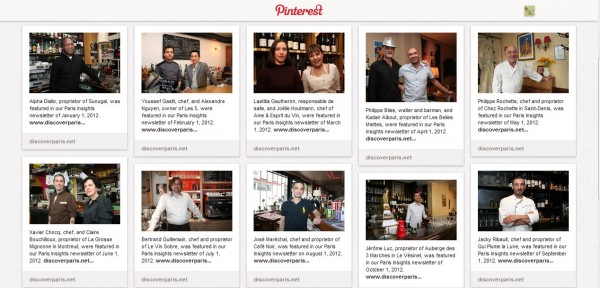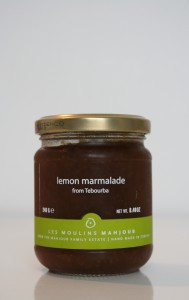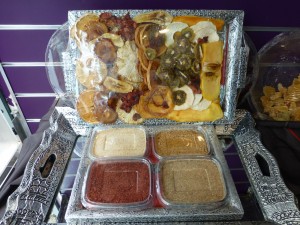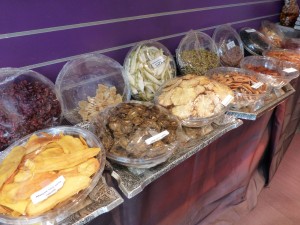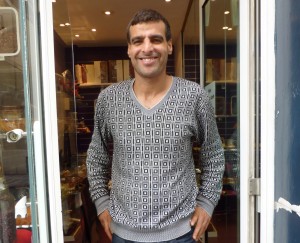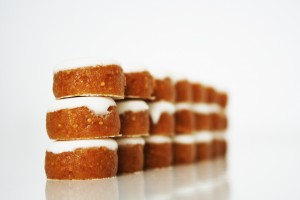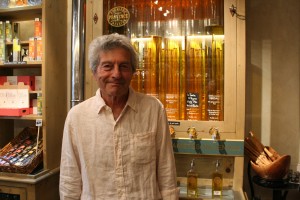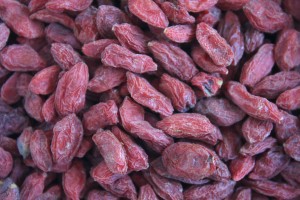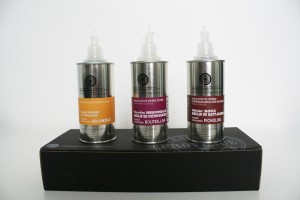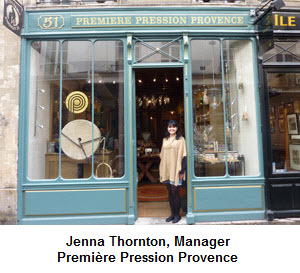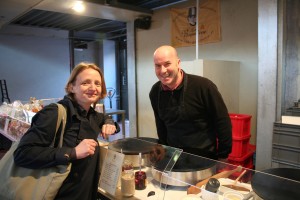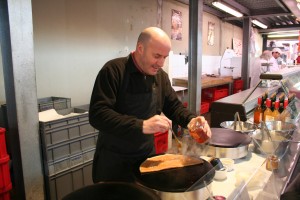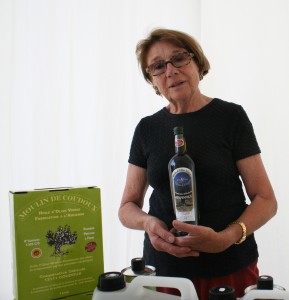
Chantal de Lander-Gaubens
Photo by www.DiscoverParis.net
On Saturday, June 2, I paid a visit to the Boutique Ephémère (Ephemeral Boutique) located in the 15th arrondissement of Paris. There I purchased a bottle of oil produced from olives grown by Chantal de Lander-Gaubens on her farm (called Domaine de Vautubière) near Aix-en-Provence in southern France. Chantal had driven to Paris to sell her olive oil over a three-day period at the Ephemeral Boutique. I had read somewhere that her oil is produced by the traditional method, so I made a special effort to get to the boutique to buy a bottle.
The traditional method of olive oil production involves squeezing the juice of the olives using a hydraulic press and then painstakingly skimming the oil off the top of the juice using a large, slightly convex, metal disk (called a feuille in French).
But let me start from the beginning of the procedure!
After the harvest, the olives are placed in a vat for a short period of time to allow them to ripen. They are then ground into paste, using millstones. The paste is spread onto fiber disks and the disks are stacked under a hydraulic press which squeezes out the olive juice. (In the old days, the millstones and press were powered by farm animals. Nowadays, they are powered by electric motors.)
The olive juice flows into a vat, where the oil rises to the top and is separated from the juice by hand with the feuille. (The modern method uses a centrifuge to separate the liquids.)
The oil is then stored in stainless steel vats, bottled, and sold.
An explanation of this process (in French) with photos can be seen on Chantal’s Web site.

AOC Olive Oil and Traditional Olive Oil
Produced by Domaine de Vautubière
Photo by www.DiscoverParis.net
After I purchased of a bottle of her Traditional olive oil, Chantal offered me a small bottle of AOC oil. The difference between the two, I later learned, is technical. The Traditional olive oil comes from olives that have been aged a few days longer than the AOC oil. The symbol “AOC” on the bottle is a certification that the olives come from the delimited region in which her farm is located. Chantal told me that the “Traditional” olive oil also comes from her farm, but, if I understood correctly, the oil does not qualify for the “AOC” label because the “Traditional” olives have been aged slightly longer than what is permitted for obtaining an “AOC” label.
I took the olive oils home and tasted them at the first opportunity. Monique and I poured them into small spoons and tasted each one. When we knew which oil we were tasting, we thought that we could distinguish one from the other. However, when we performed a blind taste test, we were, with one exception, unable to distinguish them.
We liked the taste of the oils. Both were smooth, mild, and surprisingly sweet. Neither had the peppery aftertaste that one usually associates with olive oil. The AOC oil was the sweetest, and the Traditional oil had a fruity flavor.
We enjoyed the opportunity to taste these olive oils, particularly because they are produced by traditional methods that are rarely used in this increasingly mechanized world of mass-produced food products. Chantal told me that she will bring a limited-production oil, called “La Fleur d’Huile,” from her farm the next time that she comes to Paris. We look forward to trying that one!
Domaine de Vautubière
13111 Coudoux
France
Tel.: 04.42.52.12.23
Web site: www.huiledecoudoux.com
* * * * * * *

We participate in Wanderfood Wednesdays. Head over there to explore food from around the world!
* * * * * * *
Like our blog? Join us on Facebook!

